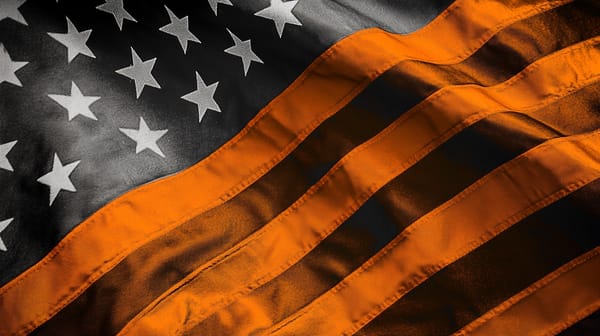Evaluating USDC Regulatory Compliance Across Global Jurisdictions
Stablecoins like USDC have exploded in popularity in recent years as a way to bridge the gap between the innovation of cryptocurrencies and the stability and regulatory compliance of fiat currencies. However, regulatory compliance for stablecoins is complex as the global regulatory landscape evolves. Understanding how USDC and other major stablecoins approach compliance across different jurisdictions can help investors evaluate these assets.
Defining Stablecoins and USDC
Stablecoins are cryptocurrencies designed to have a stable value pegged to another asset, usually a fiat currency like the US dollar. Unlike volatile cryptocurrencies like Bitcoin, stablecoins aim to maintain a steady value and be usable as a digital currency.
USDC is a leading regulated stablecoin launched by Circle and Coinbase in 2018 as a fully audited, fully reserved dollar-backed cryptocurrency. USDC reserves are regularly attested to by top accounting firms to verify 1:1 US dollar backing. It operates on open, transparent blockchains like Ethereum and Solana.
Navigating Global Regulation
Regulation of cryptocurrencies is complex and evolving worldwide. Most global jurisdictions have not enacted specific stablecoin regulations yet. However, stablecoins may fall under existing regulations for fiat currencies, securities, commodities, and money transmission depending on their structure and use.
Major markets like the United States and European Union apply existing money transmitter and anti-money laundering (AML) regulations to stablecoins. But regulatory uncertainty persists around whether certain stablecoins qualify as securities.
Emerging markets often have ambiguity and lack of regulatory clarity around cryptocurrencies. Some smaller jurisdictions like Gibraltar have created specific licensing regimes for stablecoins. Dialogue continues around potential stablecoin frameworks.
USDC's Compliance Approach
USDC aims to comply with regulations in all jurisdictions where it operates. It has taken steps like:
- Registering as a money services business with FinCEN and obtaining money transmitter licenses across most US states that require them.
- Using stringent KYC procedures for customers of Circle and Coinbase to comply with AML laws.
- Engaging with regulators worldwide to ensure compliance with local laws.
- Attesting reserves through third-party firms like Grant Thornton to verify dollar backing.
- Using regulated, compliant blockchains like Ethereum and Solana.
USDC cannot necessarily prevent all regulatory violations by individual end users. But its issuers design it to comply with regulations applied to stablecoins.
Evaluating Compliance in Key Markets
Understanding USDC's compliance approach in its top markets can help evaluate its regulatory standing:
United States
The US treats stablecoins as money transmitters subject to FinCEN registration, state money transmitter licensing, and federal/state AML laws. USDC complies with these money services business regulations. Uncertainty persists around whether USDC could be considered a security.
European Union
The EU currently regulates stablecoins under AML laws and forthcoming � asset regulations. USDC follows EU AML rules like travel rule information sharing between VASPs. Efforts continue to develop a bespoke EU stablecoin framework.
United Kingdom
The UK regulates stablecoins as e-money if backed 1:1 by fiat reserves. USDC does not currently have an e-money license but could pursue one as the UK explores a broader digital assets regime.
Canada
Canada treats stablecoins as money services businesses, requiring registration and AML compliance. USDC is registered as an MSB and follows Canadian AML rules. Discussions continue around potentially regulating some stablecoins as securities.
Japan
Japan defines stablecoins as prepaid payment instruments under its Payment Services Act, requiring registration and reserves to redeem obligations. USDC complies with rules where applicable. But direct oversight focuses on onshore Japanese stablecoins.
India
India allows only INR-backed stablecoins from regulated entities. USDC and other foreign-backed stablecoins remain unregulated. Authorities are exploring potential stablecoin standards, which could restrict USDC's activity without India-specific compliance steps.
Looking Ahead at the Global Regulatory Trajectory
Regulation is a moving target for global stablecoins like USDC. Some potential regulatory trends to monitor include:
- Bespoke stablecoin frameworks: Jurisdictions like the EU, UK, and Canada may create dedicated regulatory regimes for stablecoins. This could impose new compliance requirements.
- Increased scrutiny of reserves: Regulators seem likely to ramp up standards around reserve attestation, custody, and redemption rights.
- Anti-monopoly rules: As stablecoins grow, regulators may put more focus on ensuring sufficient competition and interoperability in payments.
- Security designations: Some jurisdictions may categorize certain stablecoins as securities, triggering extensive registration and disclosure rules.
USDC aims to engage actively with evolving regulatory developments and position itself at the forefront of compliant stablecoin offerings. But in an emerging landscape, new compliance hurdles will inevitably emerge across different global markets.
How Could Blockchain-Based Compliance Systems Help?
Blockchain technology offers promising ways to embed compliance into the design of digital currencies like stablecoins:
- Automated KYC/AML checks: Personal identity and transaction monitoring could happen on-chain based on preset rules, improving enforcement of anti-money laundering regulations.
- Transparent attestation of reserves: Reserve backing could be programmatically validated through smart contracts, with real-time attestations recorded on-chain,
- Restricted access stablecoins: "Whitelisting" technology could allow only approved, KYC'ed entities and wallets to transact in a stablecoin, improving compliance.
- Automated regulatory reporting: Transaction patterns could trigger automated alerts and filings with regulators like FinCEN, improving transparency.
If implemented carefully, these applications of crypto could enhance compliance without compromising user privacy and decentralization. But regulatory comfort with crypto is essential for adoption.
How Can Individual Users Evaluate Compliance Themselves?
For individuals assessing stablecoin compliance themselves, key steps include:
- Reviewing available attestation reports from issuers on reserve backing, redemption rights, etc.
- Checking for registrations/licenses in relevant jurisdictions, such as FinCEN MSB registration.
- Evaluating the compliance procedures and controls of exchanges/platforms offering the stablecoin.
- Considering the blockchain technology underlying the stablecoin and any embedded compliance features.
- Monitoring announcements from regulators regarding supervision of and rules for specific stablecoins.
- Avoiding making assumptions, as compliance requirements vary across jurisdictions.
No stablecoin is bulletproof from a compliance standpoint. But taking steps to independently verify compliance claims from issuers can help users make educated choices.
Conclusion
As regulatory scrutiny of stablecoins increases, understanding USDC's approach to compliance across global markets aids in evaluating its standing. While grey areas remain in many jurisdictions, USDC aims to position itself at the forefront of regulated stablecoins, taking steps to comply with existing rules and engage with evolving frameworks. With the landscape shifting rapidly, regulatory compliance will remain a moving target for USDC and its peers seeking global acceptance.




